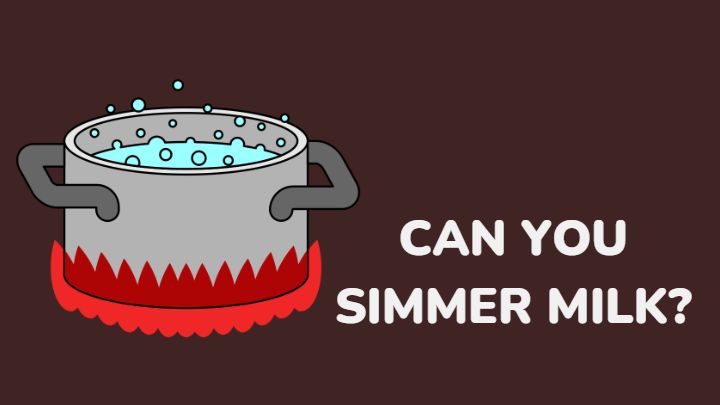Simmering helps to thicken milk for cream-based sauces and other dishes that need to be creamy.
Beyond making cereal for breakfast, milk lends its richness to sauces and soups. When a sauce or soup requires thickened milk for creaminess, you need to simmer milk.
Before I go further into this article, you should know what simmering is and how it is not the same as boiling. Simmering is a cooking method that cooks food gentler than boiling such that the surface tension of the liquid keeps bubbles from breaking out.
What does it mean to simmer milk?
Simmering milk is a method of cooking milk at a temperature that is lower than its boiling point such that bubbles do not break out on the surface.
When you simmer milk, you cook it slowly and gently on low heat to reduce its quantity and thicken it.
At what temperature does milk simmer?
Milk simmers between 180°F to 190°F.
If you’re using a numbered stove, put the knob between numbers 2 and 3 to get medium-low heat. You can adjust it to increase the temperature based on the level of simmer you want.
How long does it take to simmer milk?
Milk simmers within 2 to 3 minutes.
Make sure you pay attention to the milk in the saucepan. If it starts to simmer before 3 minutes, remove it from the heat. Do not allow milk to boil.
How do you know milk is simmering?
When milk simmers, small fine bubbles rise from beneath the liquid and break through to the surface.
The bubbles appear at different and distant spots on the surface of the milk. The more it simmers, the more it bubbles.
Later on, the bubbling becomes constant but the milk does not boil. It progresses and steam appears on the surface of the milk. Afterward, the milk begins to thicken and reduce in quantity.
How to simmer milk
What you need
- Milk
- Saucepan
- Wooden spoon or spatula
Instructions
- Pour the milk into the saucepan
- Then, set the stove to the required temperature or number to get the appropriate level of heat
- Place the saucepan on the stove and allow it to simmer
- When the quantity has reduced and the milk has thickened, you can take it off the heat
Does simmering curdle milk?
Yes, it does.
The heat causes the pH of the milk to drop and the milk becomes acidic. The protein in the milk coagulates and forms lumps in the milk. Although curdled milk does not taste nice, it is not harmful.
Does simmering fix spoiled milk?
No, it does not.
When milk has gone bad, it is irreparable. Therefore, simmering it does not reverse the signs of spoilage. Cooking spoiled milk may kill the bacteria, but it won’t fix the acidic and sour taste or change the lumpy or slimy texture.
FAQs
Does simmering milk make it unhealthy?
No, it does not.
Simmering milk does not remove any nutrients from the milk. The only thing that may put you off is the lumps. If you don’t like the lumps, remove them and use the milk to cook your meals.
Should you simmer milk?
Simmering milk is not compulsory unless you need to thicken it for sauces, soups, mac n cheese, or any other dish.
Can you give a baby simmered milk?
It’s okay to simmer babies’ milk before using it to prepare their meals. But you should make sure that the baby is old enough to take milk.
Conclusion
Simmering is one of the cooking methods that help to reduce the quantity of moisture and make foods tender. It also helps to make the milk thicker before using it to make creamy sauces and soups.
Before you simmer milk, remember that you cannot simmer it twice. Also, while simmering milk, do not allow the milk to boil.
Thanks for reading.
Learn helpful kitchen hacks and read more informational articles like this on Millenora.
